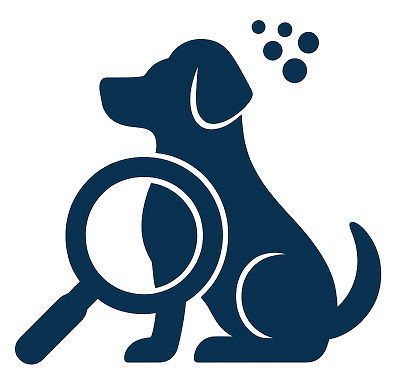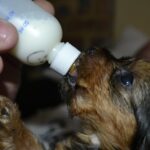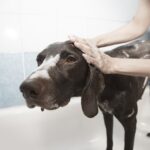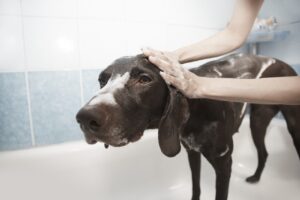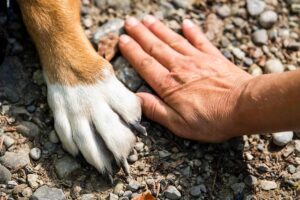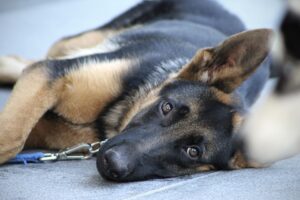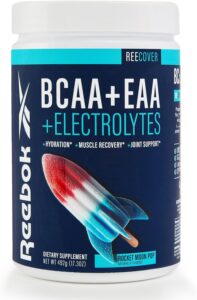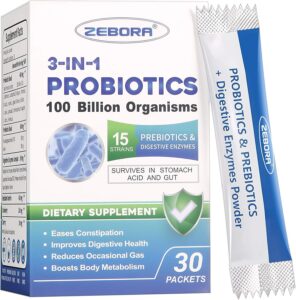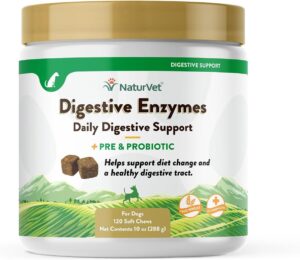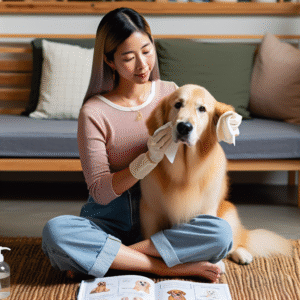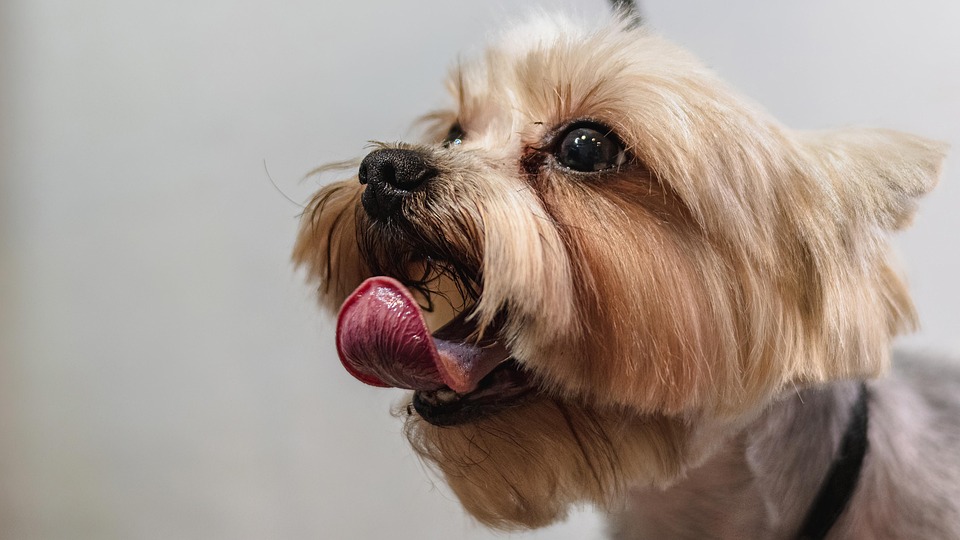
Grooming is an essential aspect of maintaining the overall health and happiness of your canine companion. A well-groomed dog is not just a clean dog, but also a healthier and more comfortable one. Establishing an optimal grooming schedule is crucial for ensuring that your pet remains in peak condition. This article will explore the various components of a comprehensive grooming routine and provide guidance on how to tailor this schedule to suit your dog’s specific needs.
Understanding Your Dog’s Grooming Needs
Before establishing a grooming schedule, it’s important to understand that each dog has unique grooming requirements based on factors such as breed, coat type, age, and lifestyle. Some breeds require more frequent grooming due to their coat length or propensity for shedding, while others may need less frequent attention. Here, we will discuss how these factors influence grooming needs:
Breed and Coat Type
Dogs come in a variety of coat types, including short, medium, long, curly, and double-coated. Each type has its own grooming requirements:
– **Short-haired breeds**: Breeds like Beagles and Boxers typically have low-maintenance coats that require less frequent grooming.
– **Long-haired breeds**: Breeds such as Shih Tzus and Afghan Hounds need regular brushing to prevent tangles and mats.
– **Curly-coated breeds**: Poodles and Bichon Frises require regular trimming and brushing to maintain their coat’s appearance.
– **Double-coated breeds**: Dogs like Huskies and Golden Retrievers need seasonal shedding management and regular brushing to keep their coats healthy.
Age and Health
Puppies and senior dogs may have different grooming needs compared to adult dogs. Puppies are often more sensitive and may require gentle grooming sessions to acclimate them to the process. Older dogs may have health issues such as arthritis, requiring more careful handling during grooming.
Lifestyle
Dogs that spend a lot of time outdoors or engage in activities like swimming or hiking may need more frequent grooming to remove dirt, debris, and prevent matting.
Components of a Dog Grooming Schedule
A comprehensive grooming schedule should include several key components to ensure your dog’s coat, skin, and overall health are maintained. These components include brushing, bathing, nail trimming, ear cleaning, teeth cleaning, and coat trimming.
Brushing
Regular brushing is essential for most dogs, as it helps to distribute natural oils, remove loose hair, and prevent mats and tangles. The frequency of brushing depends on the dog’s coat type:
– **Short-haired dogs**: Brush once a week to remove loose hair and maintain a healthy coat.
– **Long-haired dogs**: Brush daily or every other day to prevent tangles and mats.
– **Curly-coated dogs**: Brush every few days to maintain their coat’s texture and prevent mats.
– **Double-coated dogs**: Brush several times a week, especially during shedding season, to manage loose fur.
Bathing
Bathing helps to remove dirt, allergens, and odors from your dog’s coat. However, over-bathing can strip the skin of natural oils, leading to dryness and irritation. A general guideline for bathing frequency is:
– **Every 4-6 weeks**: For most dogs, to maintain a clean and healthy coat.
– **More frequently**: For dogs that get dirty often due to their activities or environment.
– **Less frequently**: For dogs with sensitive skin who may benefit from less frequent bathing.
Use a dog-specific shampoo that is gentle on the skin and coat. Avoid human shampoos, as they may be too harsh for your dog’s skin.
Nail Trimming
Regular nail trimming is crucial to prevent overgrown nails, which can cause discomfort or even lead to injury. The frequency of nail trimming depends on the dog’s activity level and the type of surfaces they walk on:
– **Every 3-4 weeks**: For most dogs, to keep nails at a healthy length.
– **More often**: For dogs that primarily walk on soft surfaces or are less active.
If you’re uncomfortable trimming your dog’s nails at home, consider seeking professional assistance from a groomer or veterinarian.
Ear Cleaning
Regular ear cleaning helps prevent infections and removes dirt and wax buildup. Dogs with floppy ears or those prone to ear issues may need more frequent cleaning:
– **Every 2-4 weeks**: For most dogs, to maintain ear health.
– **Weekly**: For dogs with a history of ear infections or those with floppy ears.
Use a vet-recommended ear cleaner and avoid using cotton swabs, which can damage the ear canal.
Teeth Cleaning
Dental hygiene is an often-overlooked aspect of dog grooming, yet it is crucial for preventing dental disease and promoting overall health. Regular teeth cleaning should be part of your dog’s grooming routine:
– **Daily brushing**: For optimal dental health, using a dog-specific toothbrush and toothpaste.
– **Professional cleanings**: As recommended by your veterinarian, typically once a year.
In addition to brushing, consider providing dental chews or toys to help reduce plaque buildup.
Coat Trimming
Some breeds require regular coat trimming to maintain their appearance and health. The frequency of trimming depends on the breed and coat type:
– **Every 4-8 weeks**: For breeds with continuously growing hair, such as Poodles and Cocker Spaniels.
– **Seasonally**: For double-coated breeds, to manage shedding and maintain a manageable coat length.
Professional grooming services can ensure your dog’s coat is trimmed correctly and safely.
Creating a Grooming Schedule
Once you understand your dog’s unique grooming needs, you can create a tailored grooming schedule. Here are some steps to consider:
Assess Your Dog’s Needs
Consider your dog’s breed, coat type, age, health, and lifestyle to determine their grooming requirements. Consult with a veterinarian or professional groomer if you’re unsure about the specifics.
Create a Routine
Establish a regular schedule that incorporates all necessary grooming tasks. Consistency is key to maintaining your dog’s health and comfort. Use a calendar or digital reminders to keep track of grooming tasks.
Monitor and Adjust
Regularly assess your dog’s coat, skin, nails, ears, and teeth to ensure your grooming routine is effective. Adjust the frequency of grooming tasks as needed based on seasonal changes, health conditions, or lifestyle changes.
Conclusion
A well-planned grooming schedule is an integral part of your dog’s health and well-being. By understanding your dog’s specific grooming needs and incorporating regular brushing, bathing, nail trimming, ear cleaning, teeth cleaning, and coat trimming into your routine, you can ensure your furry friend remains healthy, comfortable, and happy. Remember, grooming is not just about aesthetics; it’s about fostering a strong bond with your pet and ensuring they lead a healthy, fulfilled life.
#ChatGPT assisted in the creation of this article.
